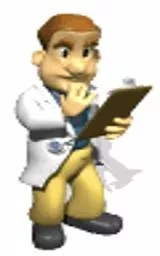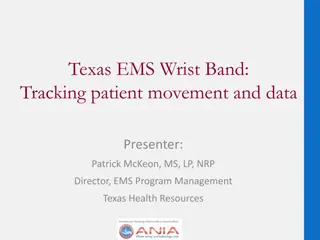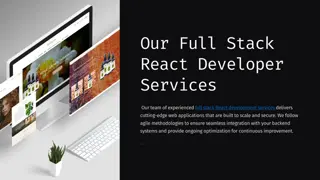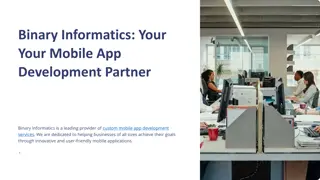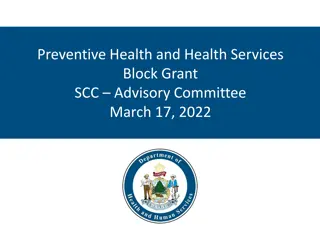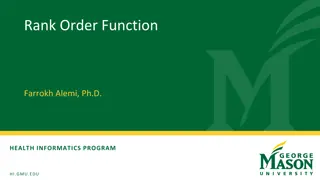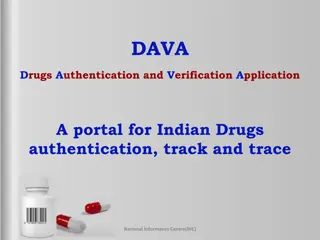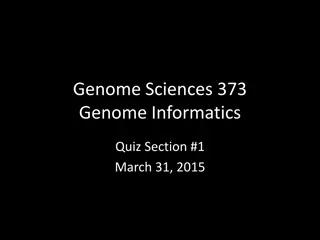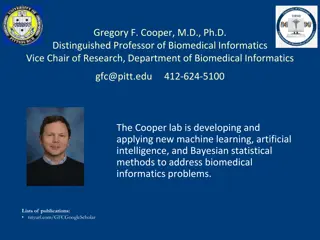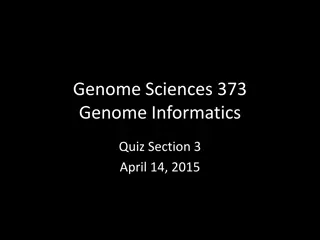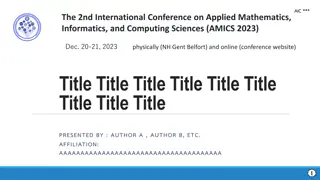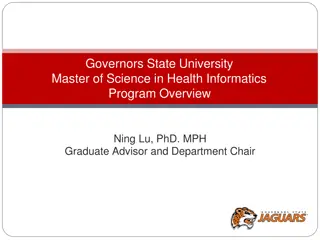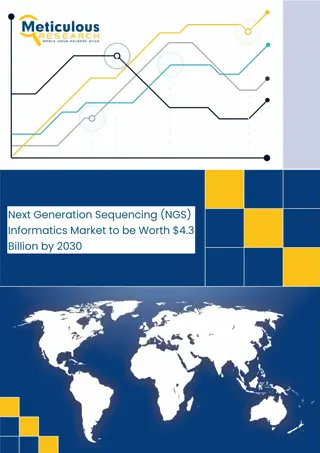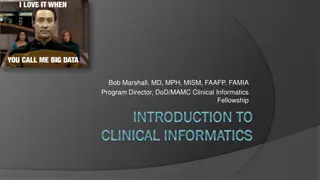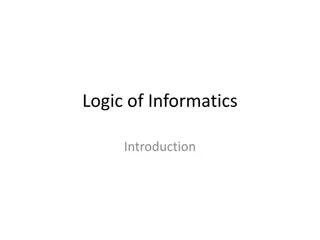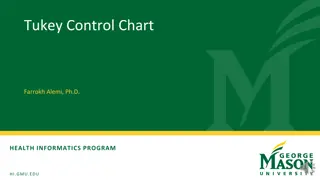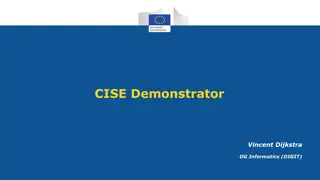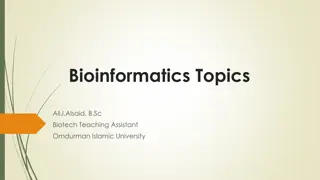Nursing Documentation and Informatics Overview
Nursing documentation is essential for providing written evidence of quality client care, client responses to interventions, and maintaining confidentiality. It includes standards set by regulatory bodies like The Joint Commission and involves multidisciplinary communication within healthcare teams. Records serve various purposes such as communication, legal documentation, education, and research. Guidelines for charting emphasize clarity, accuracy, and confidentiality.
Download Presentation

Please find below an Image/Link to download the presentation.
The content on the website is provided AS IS for your information and personal use only. It may not be sold, licensed, or shared on other websites without obtaining consent from the author. Download presentation by click this link. If you encounter any issues during the download, it is possible that the publisher has removed the file from their server.
E N D
Presentation Transcript
Documentation & Informatics 1
What is Documentation? 2 Any thing written or printed within a client record Provides written evidence of quality of client care provided Written evidence of client s response to diagnostic tests and interventions Record or chart is a permanent, legal, comprehensive account of client s health status Reports are oral, written, or audiotape exchanges of information between care-givers
Confidentiality Nurses are legally and ethically obligated to keep client information confidential. Nurses are responsible for protecting records from all unauthorized readers. HIPAA act requires that disclosure or requests regarding health information are limited to the minimum neccessary need to know only. What structured data elements do you need to provide you job function?
Standards The Joint Commission requires each client have an assessment: Physical, psychosocial, environment, self-care, client education, and discharge planning needs Requires documentation within context of nursing process including teaching & d/c planning Evaluation of outcomes Federal and state regulations, state statutes, standards of care, and accreditation agencies set nursing documentation standards. Nurses must document in accordance with standard of care & facility s policy.
Multidisciplinary Communication Within the Health Care Team Records or chart: Confidential permanent legal document Reports: Oral, written, audiotaped exchange of information SBAR: Situation Background Assessment Recommendations Consultations: A professional caregiver providing formal advice to another caregiver Referrals: Arrangement for services by another care provider
Purpose of Records Documentation 6 Communication Legal documentation Financial reimbursement Education Research Auditing and monitoring
Guidelines for charting 7 1. Be sure that client s name and medical record number are on each page of the chart 2. Date and sign each entry 3. Chart relevant and appropriate data 4. Avoid use of negative terms to describe client s behavior 5. Do not write about other staff members 6. Record facts clearly and accurately 7. Omit unnecessary words or vague terms 8. Use only standard abbreviations
Guidelines for charting cont d 8 Use black ink Write legibly, briefly and neatly Use correct grammer, spelling and punctuation Sign each entry with your name and title Never skip a line or leave a line blank Correct errors by drawing a line through the entry, don t erase or use white-out Chart information as soon as possible
Quality Documentation and Reporting 9 Factual Accurate Complete Timely Organized
Methods of Recording Narrative: The traditional method Story like format, time consuming., replaced by other formats Problem-Oriented Medical Record (POMR): Database Problem list Nursing care plan Progress note
Methods of Recording: Progress Notes SOAP: Subjective, objective, assessment, plan SOAPIE: Subjective, objective, assessment, plan, intervention, evaluation PIE: Problem, intervention, evaluation Focus Charting (DAR): Data, action, response BOX 26-2 for examples of each
Methods of Reporting Source records: A separate section for each discipline Charting by exception (CBE): Focuses on documenting deviations Case management plan and critical pathways: Incorporates a multidisciplinary approach to care Review Care Map for Pneumonia: Fig 26-3 pg 395 & 396
Common Recording Keeping Forms 14 Admission assessment or nursing history forms Flow sheets and Graphic records Kardex or client care summary Acuity Records Standardized care plan Discharge summary form
Home Care Documentation Medicare has specific guidelines for establishing eligibility for home care. Documentation is the quality control and justification for reimbursement from Medicare, Medicaid, or private insurance. Nurses need to document all their services for payment.
Long-Term Health Care Documentation Governmental agencies are instrumental in determining the standards and policies for documentation. The Omnibus Budget Reconciliation Act of 1987 includes Medicare and Medicaid legislation for long-term care documentation. RAI: Resident Assessment Instrument The department of health in states governs the frequency of written nursing records.
Reporting Change of shift Table 26-4 Telephone reports Verbal )VO) or telephone orders (TO) Box 26-8 Transfer reports Incident reports
Computerized Documentation 18 Software programs allow nurses to enter assessment data. Computers generate nursing care plans and document care. A complete computer-based patient care record (CPCR) is not without legal risks Stores and retrieves client data fast and easily Uses standardized nursing care plans Charting is always legible Facilitates transmission of information from one care setting to another Improves communication through use of standard terminology
Examples of Documentation 19 Pt. Requesting Demerol. Looks like he needs it. Subjective: Bitten by a snake. No movement, 17 in,. Multicolored, flat head. Pt. States she is vomiting. Will observe for truth. Two valium missing from stock. Supervisor notified that I didn t do it. Skin- somewhat pale but present Both the nurse and the patient reported passing flatus
Creative Commons License This work is licensed under a Creative Commons Attribution 4.0 International License. Except where otherwise noted, this content by Southern Regional Technical College is licensed under the Creative Commons Attribution 4.0 International License. To view a copy of this license, click https://creativecommons.org/licenses/by/4.0/ Healthcare Careers Work!(HCW) is sponsored by a $2.3 million grant from the U.S. Department of Labor, Employment & Training Administration. TAACCCT Grant #TC- 26488-14-60-A-13. Southern Regional Technical College is an equal opportunity employer and will make adaptive equipment available to persons with disabilities upon request. This workforce product was funded by a grant awarded by the U.S. Department of Labor s Employment and Training Administration. The product was created by the grantee and does not necessarily reflect the official position of the U.S. Department of Labor. The U.S. Department of Labor makes no guarantees, warranties, or assurances of any kind, express or implied, with respect to such information, including any information on linked sites and including, but not limited to, accuracy of the information or its completeness, timeliness, usefulness, adequacy, continued availability, or ownership.






